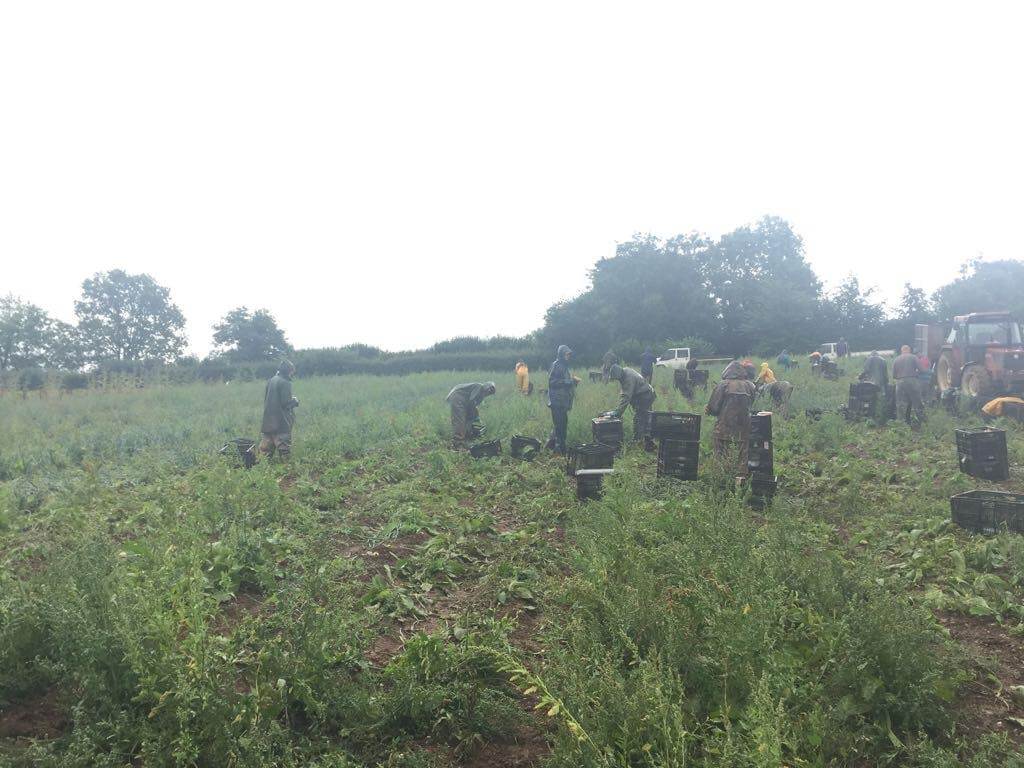Three months of dry easterlies ended last weekend with a westerly gale sweeping in off the Atlantic, accompanied by persistent, anxiety-quenching rain. Even our drenched pickers were relieved. Should we thank our cosmically attuned farm worker Raph and a few other rain dancers? Did a butterfly flap its wings somewhere? Whatever the cause, it feels like balance and benevolence have temporarily been restored; even the cooing of our pigeons sounds pleased.
The rain was patchy and localised, but we got lucky, with 44mm showing in the rain gauge. The water disappeared without trace, sucked down into the thirsty ground with no run-off. Within two days the surface looked almost as parched as before – but, critically, digging shows that the moisture from the surface soaked in to meet the moisture at depth. The effect on our plants’ turgidity, leaf colour and growth was almost instant. Most fields could suck up another 3-4 inches of rain before any soaked away to the subsoil or ran off to water courses.
The rain has saved many crops, giving them time to develop the root systems that will find moisture at depth. We have now finished planting the leeks, cabbage, kale, cauliflower and broccoli that will provide most of the greens in your boxes through autumn and winter. The more demanding summer crops will be okay for a fortnight, but once they have a full canopy of leaves, potatoes will draw an inch or more of water from the soil each week… We are not yet out of trouble. For now, it is a pleasure to walk the fields and see crops growing without stress, in ideal conditions. The gale accompanying the rain damaged delicate crops like courgettes and pumpkins, and lodged (bent over) some sweetcorn, but this was a small price to pay for the water.
It is too soon to count the cost of the drought. The bolted lettuces, yellowing spinach, stunted cabbage, failed peas and so on have put us £200,000 behind budget. More rain within a fortnight and a favourable autumn could see us catch up on the veg, but many dairy farmers have already had to feed a good part of their winter forage rations to their cows. With luck we will have a long back end (autumn stretching into early winter), allowing cows to stay out grazing fresh grass for longer, and forage to be preserved.
Guy Singh-Watson


Comments are closed.